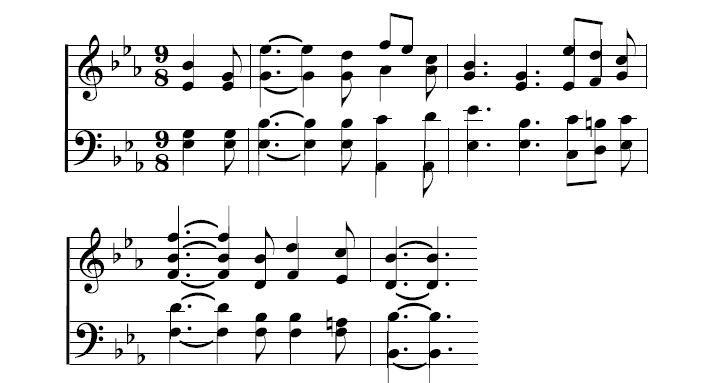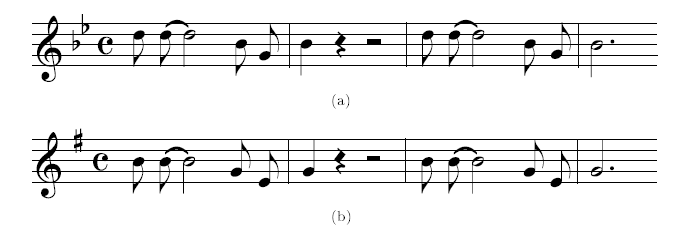If you are trying to accomodate singers, your main concern in choosing a key is finding their range. Is the music you are working with too high or too low? Is it only a step too high, or does it need to be changed by a third or a fifth? Once you determine the interval needed, check to make certain this will be a comfortable key for your instrumentalists.
Example
A church choir director wants to encourage the congregation to join in on a particular hymn. It is written in four parts with the melody in the soprano part, in a range slightly too high for
untrained singers. The hymn is written in the key of E flat. Lowering it by a minor third (one and a half steps) will allow the congregation to sing with gusto.

Example
An alto vocalist would like to perform a blues standard originally sung by a soprano or tenor in B flat. She needs the song to be at least a whole step lower. Lowering it by a whole step
would put it in the key of A flat. The guitar, bass, and harmonica players don't like to play in A flat, however, and the vocalist wouldn't mind singing even lower. So the best solution is to
lower it by a minor third (Major and Minor Intervals), and play in the key of G.

Exercise 6.3
You're accompanying a soprano who feels that this folk tune in C minor is too low for her voice. The guitar player would prefer a key with no flats and not too many sharps.

- 4242 reads






